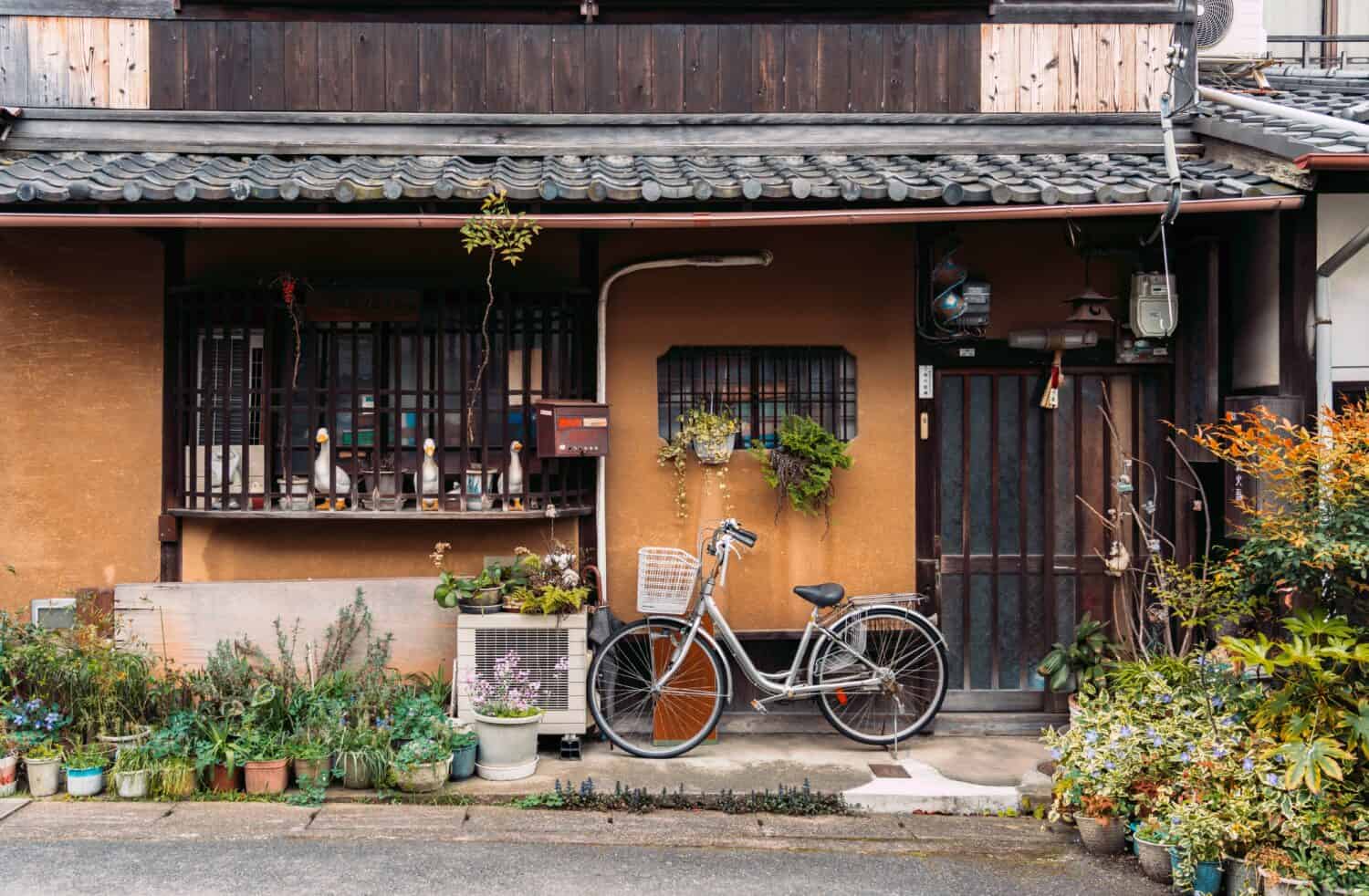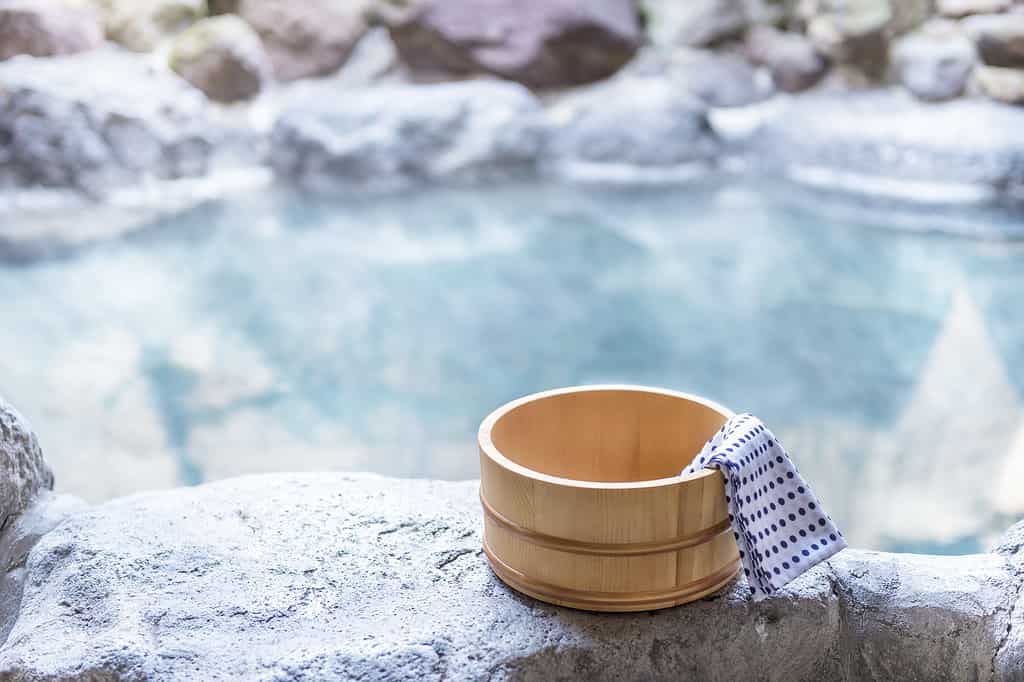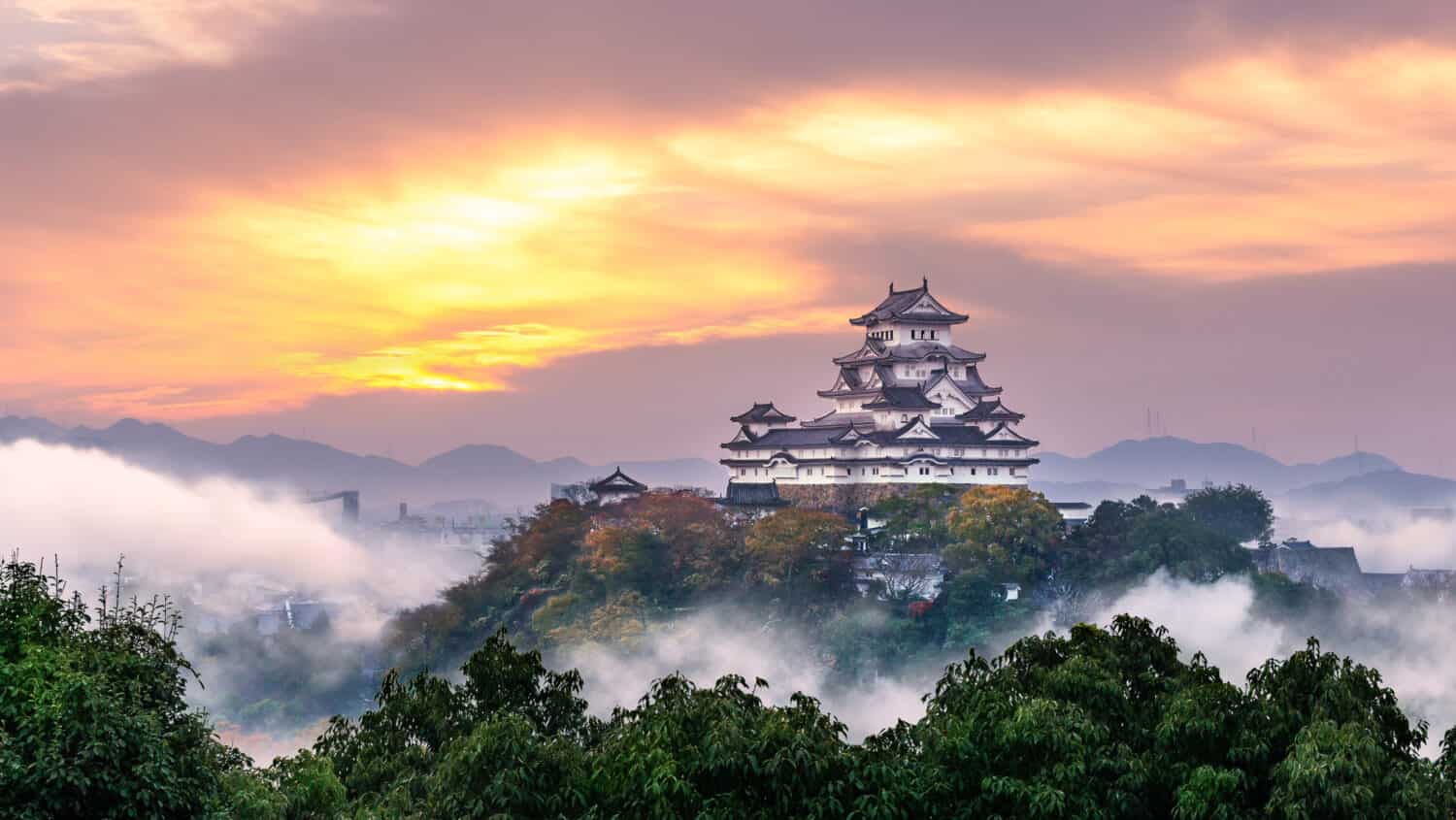Imagine a sprawling estate agleam with 11,841 square feet of living space. But it’s not in the opulent neighborhoods of Beverly Hills or the scenic coasts of the Mediterranean, but in Japan. Japan, Marie Kondo country, the place that also birthed the concept of “ma,” that pause in time, the empty-between space that anchors minimalism. Oh, and the capsule hotels. Clearly, the Japanese hold very different views on spaciousness. In fact, the very concept of “house” and “mansion” shift ever so slightly within the Japanese context. So let’s calmly, lightly, and respectfully dig in to what such notions as “really big house” means in Japan, and explore what the largest house looks like in a country where less is more.

The typical Japanese detached home is usually found in exurban and rural areas and affords an average 1,033 square feet of living space. New detached home construction, usually built in suburban areas, typically provide just over 2,000 square feet.
©Luca Brajato/Shutterstock.com
Relative Concepts of House and Mansion
In the West, the term “mansion” conjures up images of profligate grandeur. Those expansive estates complete with indoor swimming pools, home theaters, and vast, landscaped grounds. In stark contrast, the term “mansion” in Japan refers to what we’d consider an apartment or condominium complex. On the other hand, when the Japanese say “house,” they usually mean a detached, single-family home. These homes, far from Western opulence, often emphasize tradition with features like tatami flooring. The differences in these terms reveal deeper cultural contrasts in our approaches to living spaces.
While the average Japanese house stands at around a modest 1,500 square feet, according to Demographia’s analysis, our story today takes you to the other end of the spectrum. Given that larger homes are becoming increasingly rare in Japan due to a range of socioeconomic factors, the existence of an 11,841-square-foot house is a statement in itself.
It’s a tour you won’t want to miss, offering not just an exploration of an extraordinary residence, but also a glimpse into Japan’s complex relationship with space—both physical and cultural. Stay tuned as we journey through this unique story of dwelling old and new, navigating Japan’s evolving landscape of housing trends, from the growing number of abandoned rural houses known as “akiya,” to the socio-economic factors making high-rise apartments more desirable.
Panoramic Oceanview Villa Atami, or Japan’s Largest House by Contiguous Living Area
A Glimpse into Luxury
Imagine a property that is as expansive as it’s exquisite, offering awe-inspiring views of the Pacific Ocean. In a city renowned for its hot springs and natural beauty, to boot. Opulent, yet tranquil. Welcome to the Panoramic Oceanview Villa Atami , the largest house in Japan.
An Investment Worth Every Yen (But That’s a Lot of Yens)
Out of reach for most mortals, this palatial residence is listed by Sotheby’s International Realty Japan at $3,638,899, a sum converted from its original price tag of ¥398,000,000. With an area of 11,841 square feet, sitting on a generous 42,453 square-foot lot, the price boils down to $307 per square foot. One could argue that such a square footage price is a steal, given that the average square foot costs $2,335 in Hong Kong and $436 in Tokyo. But, yeah, those squares quickly add up. The property, built in August 1971, stands vacant as of the time of this writing.

The city of Atami itself dates to around 699 CE, but the nearby hot springs had been a favorite resort area for at least a couple centuries before formalization of the city.
©Sean Pavone/Shutterstock.com
The Enchanting Atami: Where the Villa Stands
Perched in the city of Atami in Shizuoka Prefecture, the villa inherits the city’s calming charms. With a history dating back to the 8th century CE, Atami offers not just a residence, but a lifestyle enriched by hot springs, a pleasant climate, and tourist attractions that range from art museums to scenic gardens.
Why Atami?
Atami, which literally translates to “hot ocean,” is a city framed by the volcanic caldera that plunges into Sagami Bay. The city’s estimated population of 40,221 promises relative peace and quiet across its 61.78 square kilometers. Moreover, much of the city sits within the Fuji-Hakone-Izu National Park. This sets the house between some Japan’s most rugged coastline and a centuries-old resort area, given its sprawling network of hot springs.
Taking a Bow or Two
To own a home in Atami is to own a piece of Japanese history, a treasure trove of natural beauty, and pristine standard of living. A luxurious dream quietly awaiting its dreamer, the Panoramic Oceanview Villa Atami, despite its superlative status as largest, humbly bows in harmony to the oceans in the morning and the mountains at twilight.

Onsen, natural outdoor hot springs for open-air bathing with nearby traditional inns, are legion in the Atami region. Many are older than the city itself.
©kuppa_rock/iStock via Getty Images
The Legacy of Japanese Architecture: A Nod to Himeji Castle
A Tale of Two Marvels
If Panoramic Oceanview Villa Atami represents modern grandeur, then Himeji Castle, another architectural marvel in Japan, epitomizes traditional splendor. The two, although different in era and purpose, appear to arise from the same collective architectural imagination.
Himeji Castle: The Majestic White Heron
Himeji Castle, also referred to as White Heron Castle, is a hilltop castle complex in Himeji, Japan. Its pristine white exterior has inspired poets and captured the imaginations of many. Dating back to 1333, this colossal fortress underwent several renovations and expansions. Unlike other castles of its era, Himeji Castle remarkably survived both the Great Hanshin earthquake and bombings during World War II.
A UNESCO Gem
Covering an area of 233 hectares, or about 576 acres, Himeji Castle is the largest and most visited castle in Japan. A feast for the eyes, it’s also a UNESCO World Heritage Site and a National Treasure, with 83 buildings that showcase intricate Japanese castle architecture. After closing for several years, the castle reopened in 2015 after extensive restoration work.
Advanced Defensive Systems and Facilities
Not just beautiful, this castle is a feat of engineering. Its advanced defensive systems—combined with special facilities like lavatories and a kitchen corridor—reveal a complex that was far ahead of its time. The main keep’s six floors offer spectacular panoramic views of Himeji city, the kind of views that remind you why this castle has been admired for almost 700 years.
Accessibility and Viewing Pleasure
Unlike with Panoramic Oceanview Villa Atami, Himeji Castle is highly accessible to those of average means. (Unless your skillset includes posing as an interested buyer of pricey mansions.) If you wish to visit, the castle is open from 9:00 to 17:00, and admission costs 1000 yen (under $7.00 USD). It’s a 15-20 minute walk from Himeji Station, making it a convenient destination. And if you’re visiting in early April, prepare for a visual spectacle: the castle grounds are a famous cherry blossom spot.
The Echoes of History
In juxtaposing the Panoramic Oceanview Villa Atami with Himeji Castle, we glimpse the true wealth of Japan’s architectural milestones, its “ma.” One offers modern luxury in a city steeped in tradition, and the other stands as an enduring survivor amidst the good and bad of Japan’s cultural, military, and natural history. So whether you’re eyeing the luxury of a modern villa or the ancient beauty of a castle, Japan offers a unique blend of the old and new.

Also known as the White Egret or White Heron, Himeji Caste is striking on several levels.
©TAW4/Shutterstock.com
Conclusion
As we draw the curtains on this architectural odyssey, we’re left pondering the complexities of Japan’s relationship with space. This is a nation where the concept of “house” is as fluid as water, molding itself to fit cultural nuances and societal shifts. On one hand, we have the Panoramic Oceanview Villa Atami. A marvel of modern design, an expansive edifice that defies Japan’s more customary leanings toward minimalism. On the other, Himeji Castle stands steep in regal history.
The two spaces, disparate as they are in style and era, nonetheless share a kindred spirit. Both capture the essence of what it means to inhabit space in Japan. Each takes its own unique approach to striking a balance between grandiosity and subtlety, pragmatism and tradition.
While each marvel offers a particular lens through which to view Japanese architecture, both underline the same paradox: that in a country known for minimalism, the grandest structures don’t simply occupy space—they elevate it. In the Land of the Rising Sun, space is more precious than gold. Breathe it in. Note the pause between breathes, the one that holds both Sayōnara and Seishikina kon’nichiwa in its open, breathless abeyance.
The photo featured at the top of this post is © Sean Pavone/Shutterstock.com
Thank you for reading! Have some feedback for us? Contact the AZ Animals editorial team.







